No products in the cart.
Temples are an integral part of Hindu way of life, and with majority of population being that of Hindu in India, there are on a rough estimate more than 13 lakhs small or big temples in India. This is besides the “Pooja room” (room for offering prayers with idols or photos of deities installed) in almost all Hindu houses, a private place of worship, where prayers are offered every day.
Every village or town will have one or more temples dedicated to a particular deity and most visit that temple regularly. Though it is not mandatory to visit temples, many do offer prayers on important Hindu festival days or on any auspicious event in their own house such as a birthday and marriage.
Typically a Hindu temple will have the following structures.
- Sreekovil or Garbhagriha, the part in which the idol of the deity in a Hindu temple is installed i.e. Sanctum sanctorum. The area around is referred as to the Chuttampalam. Typically there is also a Pradakshina area in the Sreekovil and one outside, where devotees can make Pradakshina. The inner prakaram also houses subsidiary shrines, dikpalakas, Saptamatrukas, etc.
- Shikhara or vimanam literally means “mountain peak”, refer to the rising tower over the sanctum sanctorum where the presiding deity is enshrined is the most prominent and visible part of a Hindu temples.
- A namaskara mandapam is located directly in front of the sanctum sanctorum.
- Inner wall
- Balipeetham
- Dwajasthambam or flag post
- Turtle Lamp located inside the gopuram but before the main entrance.
- Gopurams are the elaborate gateway-towers of south Indian temples.
- Outer wall.
Temple Structure and Symbolism
Let us now understand the significance and meaning of each of the structures described above and what rituals we should follow during our temple visit.
In Bhagavad Gita, Lord Krishna says that “idam sariram kaunteya ksetram ity abhidhiyate”. This body is a temple.
The human body is the temple for the indwelling Spirit of God (Antaryamin). Various parts of the temple structure correspond to various parts of the human body. The temple is the physical body (sthoola sarira) which houses the presence of Divine. So the actual building of the temple itself is a symbol of the presence of the Divine in the world.
The whole of the temple starting with the main entrance and the outermost prakaram is the body of the Lord. Hence you do not enter the temple with your foot wear on.
Sreekovil is the head. Inner Prakaram, where digpalakas and saptamatrukas are installed is the face. Wall outside the inner prakaram called the Antahara is the chest of the God. The namaskara mantapa in between is the neck. Generally the main priest does poojas here also. Outside the Nalambalam, is the agnimandala called madyahara. Lamps are lit around this wall. The outside prakaram where Balipeetham is installed forms the waist of the God. Main entrance with gopuram is the feet of the god.
Sthula sarira or the gross body is the material physical mortal body that eats, breathes and moves (acts). To better understand the temple structure and the philosophy behind each of the elements, it is important to have a very basic understanding of Panchakosa and shadchakra.
Panchakosa
Pancha Kosha is the concept in yogic philosophy that there are five layers, or sheaths, around the human soul. The term comes from the Sanskrit pancha, meaning “five,” and kosha meaning “sheath.”
Pancha Kosha consists of:
- Annamaya kosha – the food sheath
- Pranamaya kosha – the mind sheath
- Manomaya kosha – the mind sheath
- Vijnayanamaya kosha – the intellect sheath
- Anandamaya kosha – the bliss sheath
The path of yoga is said to heighten one’s understanding and awareness of these sheaths. Eventually, the aim of yoga is to move inward, taking a journey through these sheaths and uncovering one’s true nature, or Atman (the inner Self). Then one finds unity as the relationship of Atman with Brahman (the universal Consciousness) is realized.
One of the ways of working with Pancha Kosha is to undertake a Pancha Kosha meditation, which takes one’s awareness through the fives sheaths, on the path to Self-realization.
Each of the koshas has their own way that they relate to our sense of self:
Annamaya kosha – This is the physical body which needs food and nourishment to thrive. It is said to be the most vulnerable of the koshas and manifests any deficiencies on the other layers. Practicing Hatha yoga asanas works primarily with the annamaya kosha. The outer wall of the temple represents the annamaya kosha.
Pranamaya kosha – This is the sheath that exists within the physical body and is composed of life force energy, or prana. It flows in the circulatory, lymphatic and nervous systems. Pranayama works with this kosha. Inner prakaram of the temple represents Pranamaya Kosha
Manomaya kosha – This is the mind which governs perception of the world and it is where one’s sense of self develops, along with the way it behaves. Yoga nidra transcends the two outer koshas to allow the manomaya kosha to be penetrated. Inner wall – the vilakkumadam, represents the manomayakosha.
Vijnayanamaya kosha – This is the conscious body and intellect which governs one’s sense of ethics and morals. It is also responsible for inner growth and the acquisition of knowledge, which can occur through studies of sacred texts. This is represented by the inner prakaram.
Anandamaya kosha – This is the most subtle body and is generally only perceived in brief flashes of bliss. It is where we experience unity with the universal Consciousness. The Sreekovil of the temple represents Anandamaya kosha.
This experience of absolute bliss can only be realized when consciousness is expanded deeper than the material world. Meditation every day for at least 20 minutes is said to help experience anandamaya kosha.
Shadchakra
Chakra means a wheel. There are six centres of spiritual consciousness represented as shadchakras which are supposed to be attached to the spinal chord and connected to various koshas (sheaths) through several nadis (channels of energy). But in fact these centres are in the subtle body (Sukshma sarira). The six chakras are Mooladhara, Svadhisthana, Manipura, Anahata, Vishudha and Ajna.
Muladhara is located at the base of the spine between the anus and the penis. This chakra is where the three main nadi separate and begin their upward movement. Dormant Kundalini is believed to be resting here, wrapped three and a half times around the black Svayambhu linga, the lowest of three obstructions to her full rising (also known as knots or granthis).
The Muladhara Chakra forms the basis and the starting point for our spiritual development. It is the foundation from which we climb the ladder of the Chakras; the root from which we receive the nourishment for our spiritual development. Kundalini Shakti (spiritual energy) has its roots in the Muladhara Chakra, but it is in a deep, motionless sleep. When we awaken this slumbering potential that lies within the Muladhara Chakra we are able to work our way towards the light of knowledge and attain the fruit of Self-Realisation.
The Svadhishthana Chakra lies about three centimetres above the Muladhara Chakra between the coccyx and the sacrum. It marks the second stage of human evolvement. As mentioned earlier, the Muladhara Chakra is the storeroom in which our experiences and Karmas lie. The activation of these Karmas now occurs in the Svadhishthana Chakra, and it is here that we have the opportunity to purify them. Even though our weaknesses and mistakes are located in this Chakra, it is here that a valuable opportunity to develop our human consciousness to a higher level is offered. Through work on the Svadhishthana Chakra we are able to bring our baser instincts under control, transform them and ultimately transcend them.
We are not victims of our past, or the “puppets” of external forces, but rather we are creating our own destiny here and now. To be able to do this consciously it is important that we confront and evaluate our qualities and intentions honestly, and then direct them consciously towards the good. Once we gain clarity about what is being fed into our subconscious we are better able to understand our motives and actions and recognise the connection between action and reaction. In this way we are capable of foreseeing the consequences of our behaviour, and by altering our behaviour we can influence our future. We are then able to shape our future beneficially and support our own development.
After we have passed through the levels of unconscious and subconscious – the Muladhara Chakra and the Svadhishthana Chakra – our consciousness reaches the third level, the Manipura Chakra.
With the realisation of the Manipura Chakra the aspirant has reached an important stage on the spiritual path. For once the consciousness has unfolded in the Manipura Chakra there is a greater likelihood that – under the guidance of a Realised Master – one can attain the goal of Supreme Consciousness in this lifetime. At the Manipura Chakra more than half of the journey towards realisation has already been completed. The position of the Manipura Chakra is in the middle of the abdomen behind the navel; this is why it is also known as the Navel Centre.
The Anahata Chakra is located in the region of the heart, in the centre of the chest, and this is why it is also known as the Heart Centre. And it is not without reason that the heart is regarded as the symbol of love, for the Anahata Chakra is the seat of love. The Anahata Chakra is our inner temple in which the divine Atman, “the flame of life”, resides. Self-Realisation, also known as God-Realisation, involves the recognition of our own Self, the Atman. To show that something belongs to us or concerns us we spontaneously point to the centre of the chest, the site of the Anahata Chakra. No-one points to the head, the stomach or any other part of the body. This shows clearly that we spontaneously identify ourselves with the Atman within the heart centre.
The Vishuddhi Chakra is located in the vicinity of the Larynx – and is therefore also known as the Throat Chakra. It is a centre of physical and spiritual purification. With the help of the Vishuddhi Chakra we can rid ourselves of the toxic substances that are absorbed from the environment, as well as mental impurities. An important and life-supporting function of the Chakra is the purification and detoxification of harmful substances that accumulate in the body and primarily come from the food we eat and the air we breathe. Just as Lord Shiva neither spat the poison out, nor swallowed it, we should not swallow our problems as we harm ourselves through this; but we should also not spit them out as this can cause another type of damage. Like Lord Shiva, who purified the poison in his throat, we can also resolve our problems with the help of the Vishuddhi Chakra.
In the Ajna Chakra the development of our wisdom and humanity is completed and we reach the bridge to Divine Consciousness. It is located at the upper end of the spinal column, at the point of transition from the spine to the brain. Its radiation is, however, primarily perceptible in the centre of the forehead between the eyebrows. Therefore, it is also known as the “Eyebrow Centre” or “Third Eye”. Another expression for the Ajna Chakra is “Guru Chakra – the Seat of the Master”. The Guru represents the universal, divine principle that leads us from darkness to light – which means from ignorance to knowledge, from death to immortality. We do not need to seek truth; it is always in front of us. But in order to recognise it a person needs an open, pure consciousness and clear thoughts. While our mind remains cloudy, like a dirty mirror, we see everything hazily and unclearly. It is only in a purified mind and mature consciousness that Jnana – wisdom and spiritual knowledge – can be broadened.
The Sahasrara Chakra is located on the crown of the head beneath the Fontanelle. The awakening of the Sahasrara Chakra means revelation of the Divine Splendour and attainment of Supreme Consciousness. It is the seat of Lord Shiva.

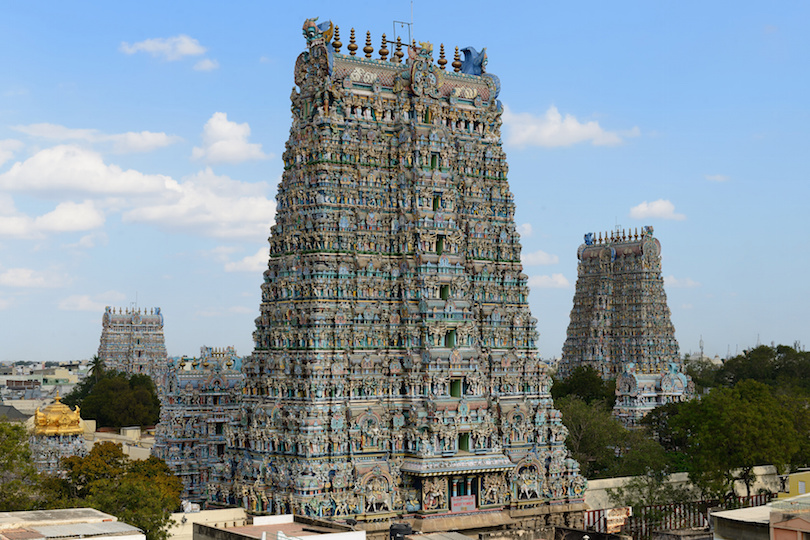
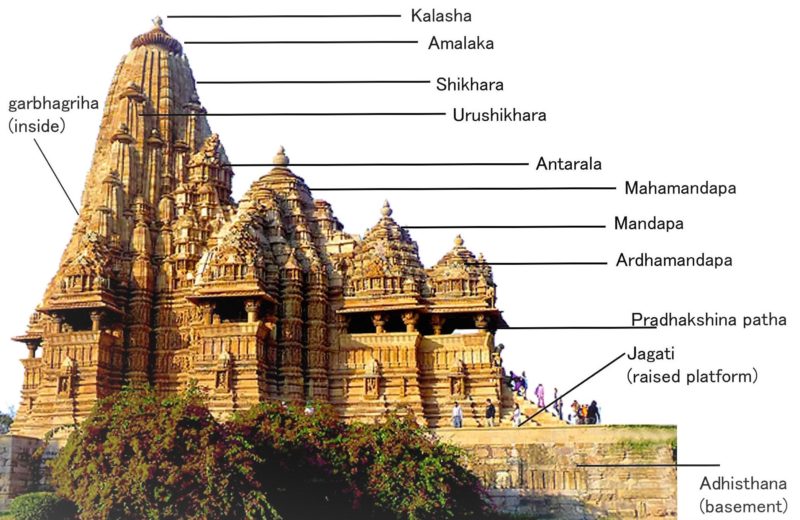
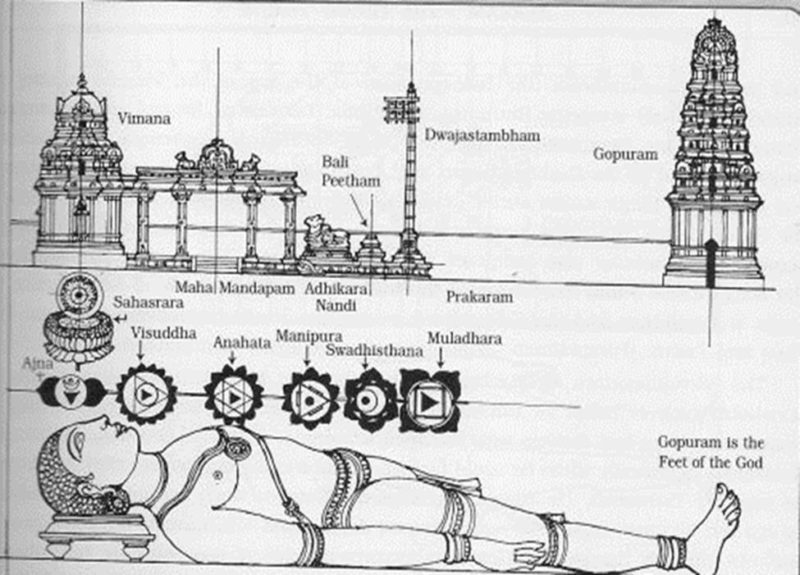
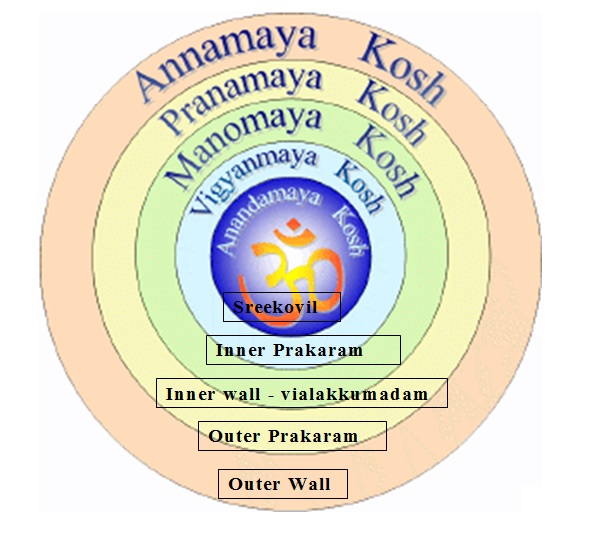
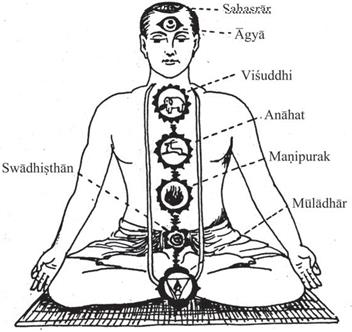





Dear Sir,
I am writing a book on the Evolution of consciousness and upliftment of humanity through OM Kriya Yoga. I am also promoting 15 ancient Vedic temples. For that I need to use your photo of the temple structure with relation to the chakras in our bodies. Please let me know the procedure and send me a high resolution photo also please. I was referred to you by Dr Stephen Knapp, who is my friend for decades.
Shomik Chaudhuri
[email protected]